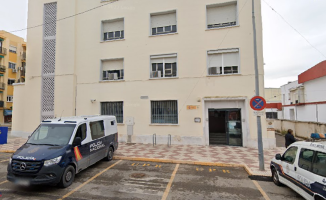Two Catalan tourists have died this Tuesday morning in a hot air balloon accident in Cappadocia, while three other passengers from the same origin have been injured. This has been notified by the Turkish authorities, according to which the device would have been forced into a forced landing by strong gusts of wind and would have violently impacted the ground, for which some of the occupants were thrown from the basket. All the victims were part of an organized trip of twenty women from Lloret de Mar.
The hot air balloon, from a private company, had taken off before 7:30 a.m. from the ruins of Zelve, in the municipality of Avanos, with 28 passengers and two crew members on board, according to the statement from the governor of Nevsehir province. At 08:50, the balloon was hit by a gust of wind that triggered a crash landing near Kavak, several kilometers from the point of origin. The decline was described as "brutal".
The weather department in the area had warned of poor conditions. Although his warning is not mandatory, many of the 150 balloons that operate daily have canceled the departure -at dawn- scheduled for today. But not others, among which is the victim.
According to the company, conditions improved around 7:25 a.m., when they decided to fly. One of those responsible, in statements to the ATV Haber channel, has stated that "some passengers fell from the basket because they were not in the descent position and unfortunately two of them have died." It would be Dolors Masana, 64, and Maria Cristina Baltrons, 62, both from Lloret de Mar.
The wounded, also Catalan, were transferred to different hospitals in the area. One has already been discharged, while the other two are still hospitalized, one of them in serious condition. Other members of the group who prefer to remain anonymous, in statements to the police, have indignantly denied the company's version: "We comply with safety regulations at all times!"
Harun, owner of a very popular carpet shop in Ortahisar and an institution in the sector, corroborates the version of these women and provides new data. He himself often acts as a liaison between available tour guides and balloons. "They have broken their necks," says Harun, "and it wasn't their fault." According to the trader, the balloon in question "belongs to the Yunak Evleri hotel" in Ürgün. "It's the only one they have."
Always according to Harun, an imponderable would have been added to the imprudence of leaving with so much wind: "The pilot, who is diabetic, when the forced landing began, due to sugar or panic, he lost consciousness." So the "brutal descent" and poor visibility to which the authorities have alluded was actually a plummet. It crashed, with an added fatality: "To make matters worse, it fell on a rock, a tremendous impact, so that some passengers were ejected from the basket and two broke their necks."
Contrary to what has been circulated, according to him, "the pilot also suffered injuries." Whether there was a co-pilot or not, he doesn't know. And if he had, he does not know what his preparation could be, given that he would not have been incapable of redirecting the situation.
The hotel in question, questioned by La Vanguardia, has said that the group from Lloret de Mar was not staying there but has not denied its link with the sinister balloon, even saying that "we are not exactly the same company". For further clarification, they refer to the manager, who, as expected, "is in a meeting."
An administrative and judicial investigation should clarify the causes of the accident. At the moment, personnel from the Spanish embassy in Ankara, three hundred kilometers to the north, have traveled to the area to assist those affected. The rest of the Cappadocia balloons, which number in the dozens, have landed without incident, although some, like the victim himself, had delayed their morning departure due to the weather alarm, which was later lifted.
"Our four balloons have landed like silk," explains an agency that does not want to give its name. Its manager acknowledges that the area where the damaged balloon has landed "is very far away" and that "something strange has happened", but that it will be the civil aviation agency that determines it.
Cappadocia is a region plagued by ancient houses and troglodytic churches, connected by kilometer-long tunnels. This fact and its capricious, fairytale geological formations have turned valleys like Göreme into one of the most popular tourist destinations in Turkey. As in the rest of the country, this year tourism has been revived in a spectacular way in Cappadocia, which has received more than one and a half million tourists in the first seven months.
It should be said that the price of hot air balloon excursions ranges between 195 euros and 210 euros. More if it is smaller groups. The crashed balloon would be within its capacity limit, 30-32 passengers, as long as it was one of the larger models.
In Turkey, shaken by inflation of more than 80% and which suffered a dramatic explosion in a mine last weekend, an Internet user pointed out that "for the first time there is an accident in the country and there are no Turkish victims, because we do not we can afford it."
In recent years, the panoramic balloon experience, lasting just over an hour, has become almost inseparable from tourism in Cappadocia, while coastal towns such as Ölüdeniz have specialized in extreme sports, such as paragliding, registering in both cases authentic air crowds in high season.
It is not the first time that accidents have occurred in hot air balloon rides in Cappadocia. A French diplomat died five years ago when he collided with power lines, two months after a Danish tourist was killed in a forced landing. The most spectacular accident occurred in 2013, when three Brazilian tourists died and twenty-two other people were injured when their balloon fell after colliding with another basket.













